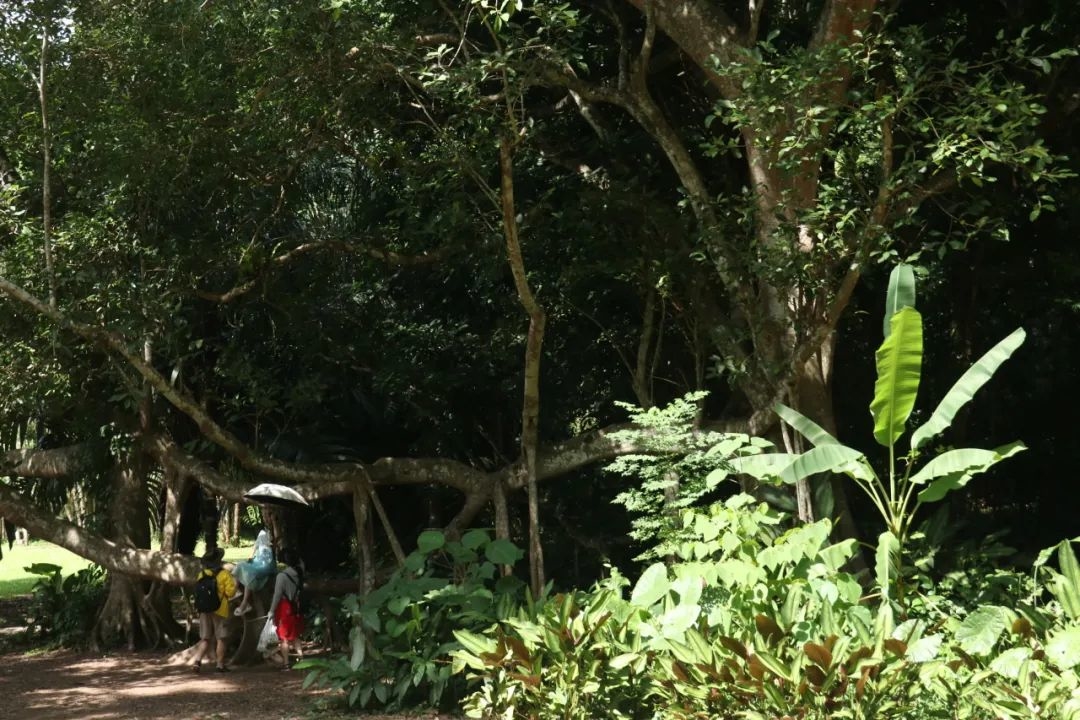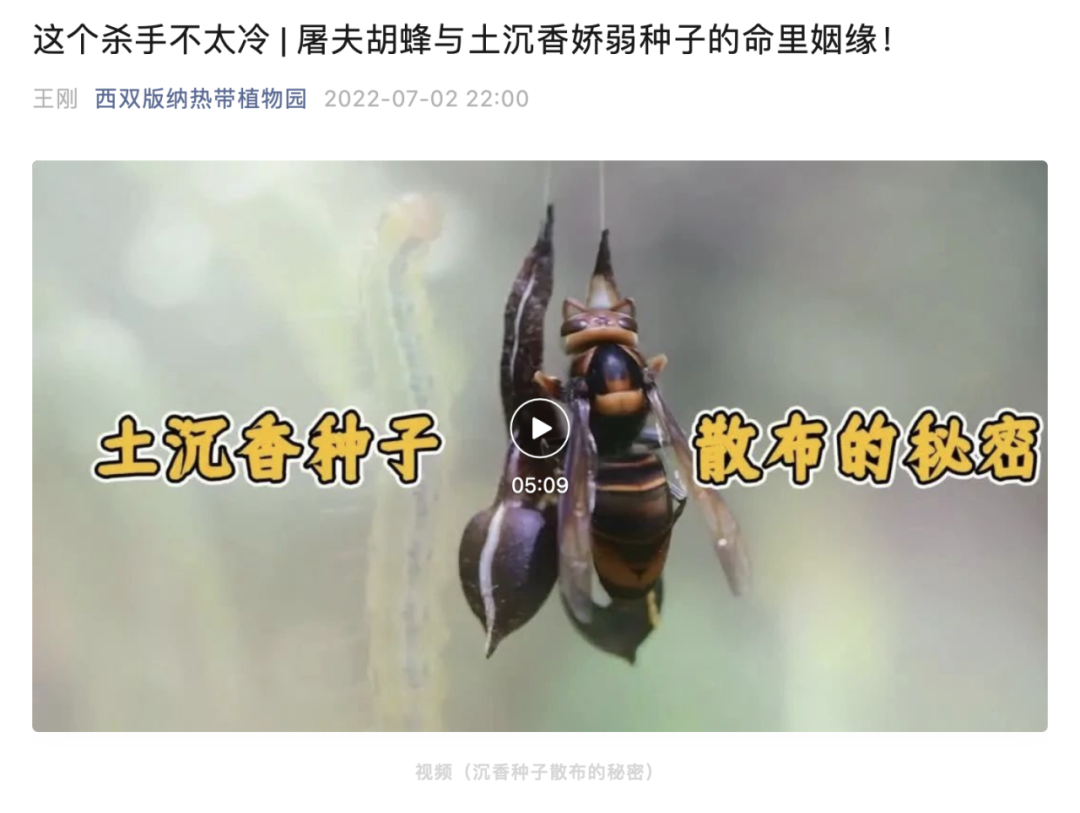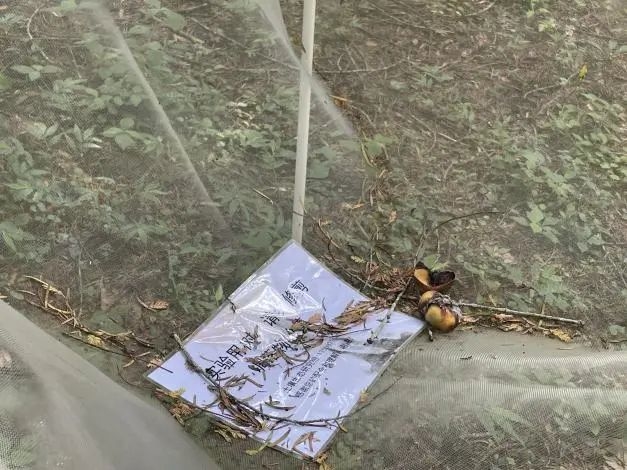15
2023.08
In the Xishuangbanna Tropical Botanical Garden (XTBG) of the Chinese Academy of Sciences (CAS), hundreds of giant water lilies gracefully float on the pond, resembling emerald jade plates. These magnificent water lilies have become the most sought-after attraction in this botanical garden nestling at the southern tip of Yunnan Province in southwest China. While children cautiously step onto the lily pads, their parents delight in capturing these moments through photographs.

Tourists in the Xishuangbanna Tropical Botanical Garden
play on the giant water lilies (photo by Li Huitao)
“Giant water lilies were introduced from the Amazon,” said Yang Zhen, the leader of XTBG’s scientific communication team. The unique leaf veins of giant water lilies provide remarkable buoyancy, enabling them to support individuals weighing up to 70 kilograms.
“However, we are not merely showcasing these water lilies as they are. Our CAS research staff here have developed new varieties of giant water lilies that exhibit greater resilience to drought and low temperatures,” Yang Zhen stressed.
This is what sets XTBG apart from an ordinary botanical garden. As the largest and most diverse botanical garden in China, it not only holds an AAAAA-level scenic spot rating but also serves as a comprehensive research institution, bridging the gap between academic research and public recreation and education.
According to its official website, XTBG houses several prominent CAS research entities, including the Key Laboratory of Tropical Forest Ecology, the Key Laboratory of Tropical Plant Resources and Sustainable Use, and the Center for Integrative Conservation. With 41 research teams specializing in various fields, XTBG has undertaken over 600 scientific research projects since 2001. This extensive work has led to the publication of roughly 3,000 academic papers, 30 monographs, and the granting of 130 national patents for scientific innovations.

The Xishuangbanna Tropical Botanical Garden
(photo by Peng Xinyi)
Now approximately half of the botanical garden are accessible to the public. This means that the trees that visitors encounter, with the assistance of tour guides, might be the very subjects of scientific research. “As researchers, we sometimes engage in popular science activities,” said Wang Gang, a professor at XTBG of CAS. "People often approach us with questions like ‘Can we eat this?’ or ‘Is this plant poisonous?’”
Even for those who cannot visit the garden in person, a strong connection to the scientific research world is still maintained.
On XTBG’s official WeChat channel, one can easily find posts introducing the latest research outcomes, presented with eye-catching titles and reader-friendly language. Wang Gang joked, “Writing a popular science article is far more challenging than writing an academic paper.”
Last year, his research on how plant-defense mimicry facilitates the rapid dispersal of short-lived seeds by hornets was published in Current Biology. Two days later, it was transformed into a WeChat article titled “Leon: The Predestined Fate of Vespa Hornets and Aquilaria sinensis’ Short-lived Seed,” borrowing the name from the French movie “Léon: The Professional.”

The headline of the WeChat post (screenshot)
The core discovery of the research revealed that Aquilaria sinensis attracts hornets by emitting fruit volatiles similar to those released from herbivore-damaged leaves, which in turn attract predators and enable rapid seed dispersal. The WeChat post succinctly explained this with orange-highlighted subheadings: “Aquilaria sinensis seeds face a dilemma between seed dispersal and seed inactivation.” “Hornets play a crucial role in providing essential, rapid, long-distance, and targeted seed dispersal services for Aquilaria sinensis, which holds significant importance for the regeneration of seedlings,” it further emphasized.
One comment that received the most likes said, “I really love these types of posts, as they enable ordinary nature lovers to understand academic papers. Thanks to the researchers, writers, and editors!”

Some of the comments on the article (screenshot)
Currently, XTBG welcomes around 10,000 tourists daily. Along the garden’s main tourism route, one might encounter girls dressed in Dai people’s traditional attire, taking photos under trees with white cloth pockets beneath them. Researchers have set up these pockets to collect any falling materials, aiding in the examination of the ecosystem components of the trees.
“Please do not trim; it is for scientific study,” states the sign attached to the cloth pockets.


The cloth pockets in the tourism area for scientific study
(photo by Li Huitao)
Writer | Li Huitao
Design | Chen Sida

2023.08.14 13:45
05
2025.09
05
2025.09
09
2025.06
 28:32
28:32
2025.06.19 08:55